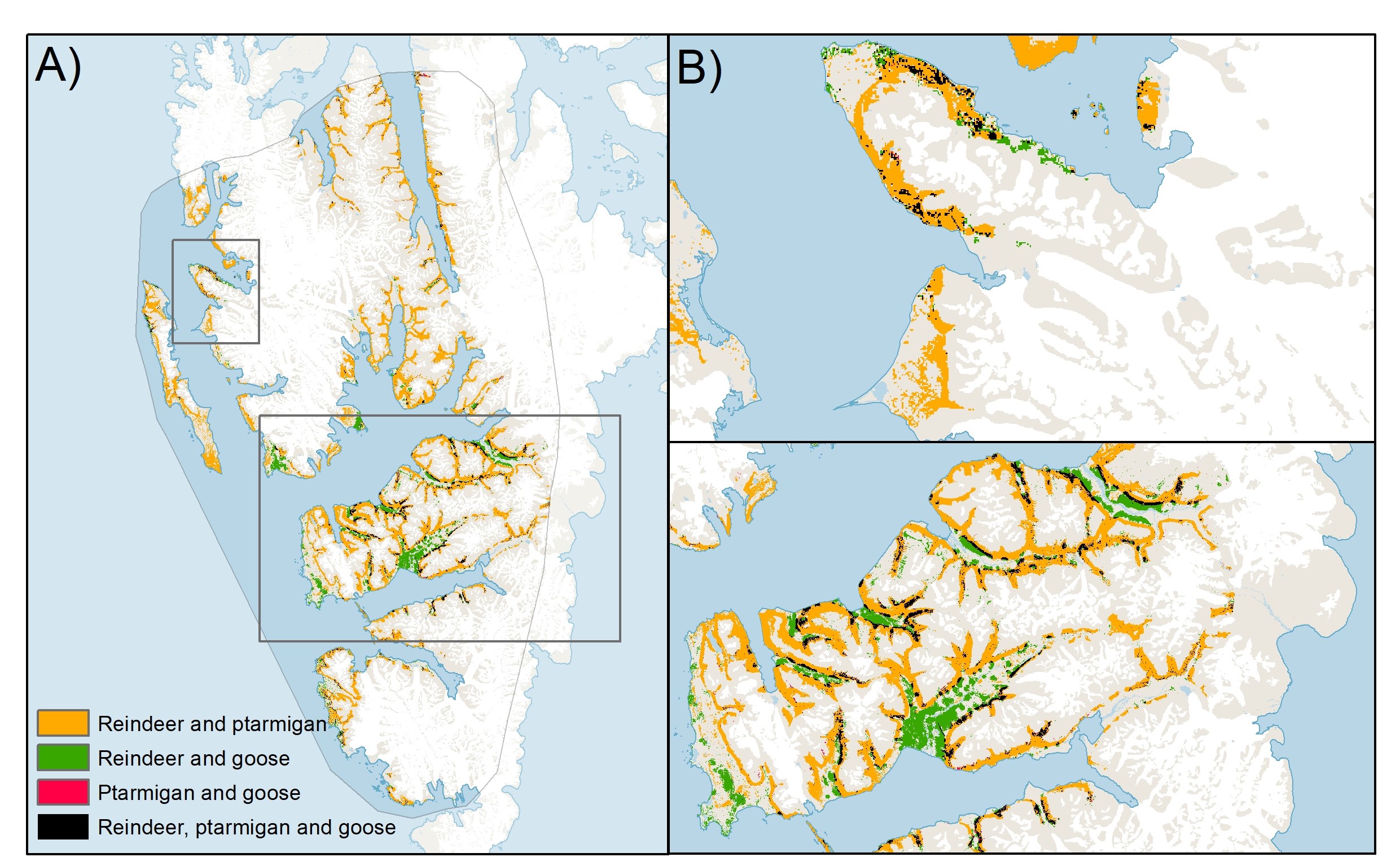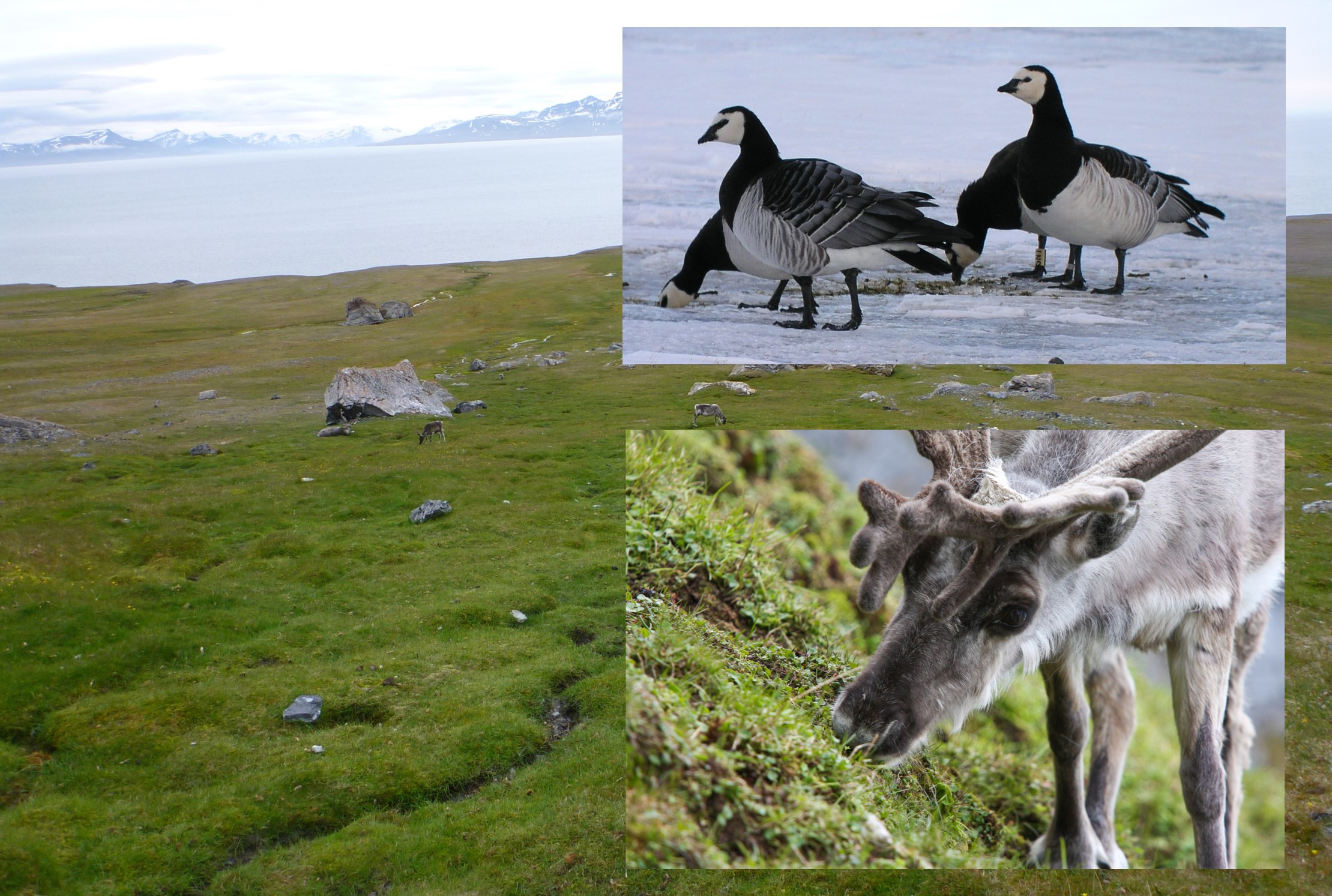A new study from COAT uncovers suitability of habitats for the three key herbivorous species in the Norwegian high Arctic Island group Svalbard: the Svalbard reindeer, the Svalbard rock ptarmigan, and pink-footed goose. Only a small fraction of the vegetated tundra was suitable for these species combined. Management and conservation of Svalbard tundra needs therefore to consider herbivore-specific habitats.
The overlap in habitat use between Svalbard rock ptarmigan and reindeer is 21%. Foto: Nicolas Lecomte
The high Arctic Archipelago of Svalbard is a scarcely vegetated but still supports large populations of several herbivores. Svalbard consists of approximately 60 % glaciers, 25 % barren and sparsely vegetated areas, leaving only 15 % vegetated areas for the herbivores.
There are two resident herbivores, the Svalbard reindeer and the Svalbard rock ptarmigan, and migratory goose species, the most abundant being the pink-footed goose and barnacle goose. The Svalbard reindeer are relatively stationary animals with only restricted migration and small home ranges. The Svalbard rock ptarmigan is the only overwintering terrestrial bird species residing across the archipelago, while the migratory goose species, the pink-footed geese and barnacle geese, fly to Svalbard from Europe and arrive in the spring for breeding.

Habitat suitability in Svalbard for the different herbivore species. Map: Ingrid G. Paulsen
There was surprisingly little overlap in habitat suitability among the three herbivores. Although 9-45 % of the vegetated area is suitable for Svalbard reindeer, rock ptarmigan and pink-footed goose separately, less than 1-2 % of the archipelagos’ vegetated area was suitable for all three herbivores combined. The highest shared habitat proportion was found between the Svalbard rock ptarmigan and the reindeer (24 %), while goose and ptarmigan shared least habitat (only 2 %). The habitat overlaps of reindeer and ptarmigan, and reindeer and geese, occurred in heath vegetation. The highest habitat overlap for the pink-footed geese se and reindeer was in moss tundra and bird cliff moss tundra at lower elevations (0-150 m)(6%). The findings, based on overlapping habitat suitability maps for the different species and confirmed by fecal pellet counts, suggest that heath and moss tundra are important shared habitats for herbivores in Svalbard.

Moss tundra below birdcliffs had highest overlap between reindeer and geese. Photo: Maite Cerezo, Christiane Hübner and Tore Nordstad.
Our results underscore the importance of the small but productive parts of the landscape for all the herbivores and suggest that management efforts to protect the habitats would target these.
Read the article here